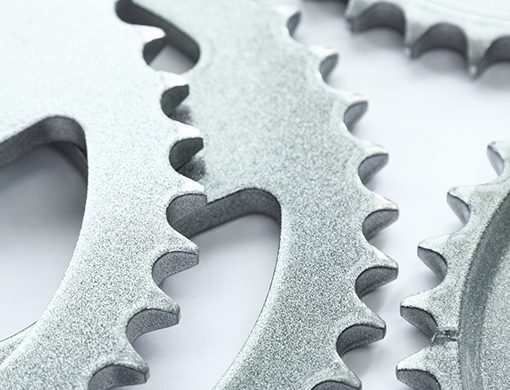Powdered metals help engineers produce parts cost-effectively
What is the best way to make a 3-D part out of metal? It depends. There are a number of considerations involved, including time and money. To create parts, manufacturers can choose either a subtractive or an additive manufacturing process. Subtractive manufacturing involves taking a block of material and machining, drilling, and cutting it away to reveal a finished part. Additive manufacturing, on the other hand, allows engineers to build 3-D objects by stacking layers of material—processes like 3-D printing, rapid prototyping, and direct digital manufacturing.
Metal 3-D printing processes, such as Direct Metal Laser Sintering (DMLS) and Selective Laser Melting (SLM), are growing at a breakneck pace. Manufacturers are using these additive manufacturing technologies to create parts for medical, aerospace, jewelry and automotive applications. For some high-tech industries, the allure of additive manufacturing is its ability to make unique parts—a benefit that extends beyond prototypes when companies use the technology to replicate hard-to-find components for old equipment, allowing them to continue to service the machines and extend their useful life.
Powdered metals are integral to additive manufacturing. A powder is a dry, bulk solid composed of a large number of very fine particles that flow freely when shaken or tilted. Metal powders can vary in shape (from round to irregular) and size. When dealing with particles of matter, a sieve or mesh through which the particles will pass is the standard for defining size. There are four processes used in the production of metal powders: solid state reduction, atomization, electrolysis and chemical. The production method used can affect the powder’s characteristics: size, shape, flow, and compressibility. Powders can be mixtures of several elements or composed of pure elements.
Both base metals and minor metals are available in powder form. Typically the term “base metals” refers to common, nonprecious metals, such as Steel, Iron, Tin, Aluminum, Copper and Brass. Minor metals is a catch-all term, encompassing materials that usually are byproducts of base metal mining and have a lower production volume, such as Tungsten, Molybdenum, Tantalum and Titanium.
Printing metal parts from scratch is a new technology, but powdered metals have been used for years in manufacturing processes that take the powder and blend it with other materials, such as copper or wax, to achieve the desired properties; compress it in a die or other form; and then sinter it to bind the particles. These powder metallurgy techniques are ideal for producing large quantities of parts cost effectively because the finished product is extremely precise and does not require extensive secondary machining. Powder metallurgy is used for parts in the automotive, aerospace, medical, agricultural equipment, and oil and gas equipment, among others. Beyond part making, powdered metals also can be used in manufacturing anti-fouling paint, as a brazing material, for various chemical applications, welding, and surface coating.
To ensure high-quality parts, producers using metal powders should consult with their supplier. Brooklyn, New York-based Belmont Metals offers a vast amount of nonferrous metals in powder form as a pure metal instead of an alloy of various elements.

